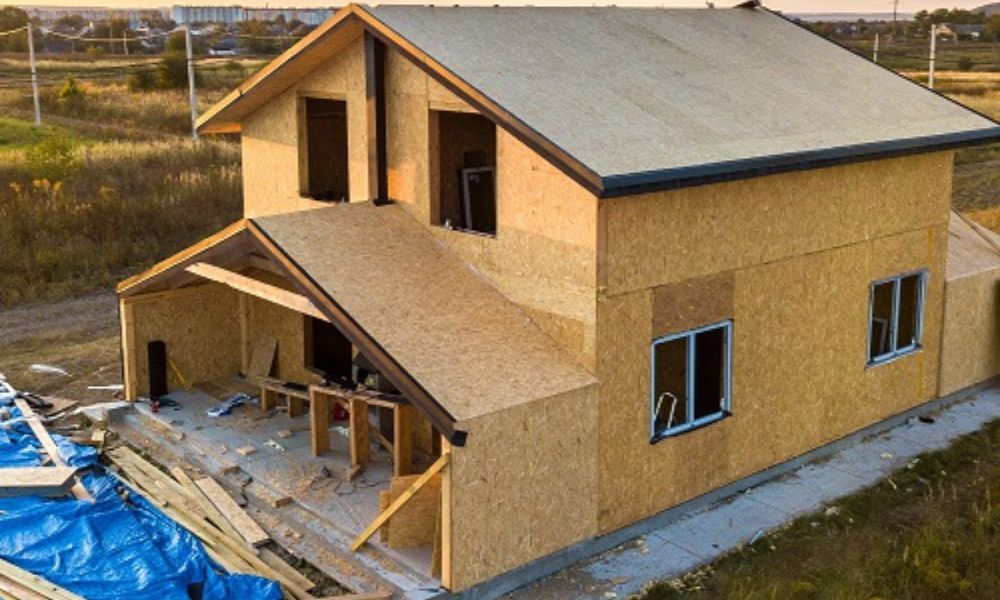

As state governments roll out plans to deliver more modular homes, many experts have welcomed pre-built housing as a solution to the current housing crisis.
However, challenges remain on how to structure these developments from a lending perspective.
“Broadly speaking, I think modular builds are hugely underdone and in a market like this I think it’s almost a necessity that more of this takes place,” said Robert Flynn (pictured above left), director of WA-based brokerage Vorteil Financial Group.
Flynn’s comments come after Bankwest introduced reformed lending policies that make it easier to finance these off-site constructed, modular properties in Western Australia.
“There’s definitely a gap in the market for finance for modular homes, so this is a welcome change,” Flynn said.
A modular home is a type of prefabricated house that is built in sections, or modules, in a factory and then transported to the building site for assembly.
This means that most of the construction work is done off-site, in a controlled environment, which can lead to several advantages over traditional homes built onsite.
ASX-listed Fleetwood Australia, the country’s largest modular construction company, said modular homes offer faster delivery, reduced construction waste, and the potential for reconfiguration and relocation as communities evolve.
Modular homes can also be built during bad weather.
Incessant rain in Australia’s eastern states throughout 2022 led to construction costs ballooning, according to the Property Council of Australia, exposing builders to unbudgeted increases and heavy losses.
Weather is often identified as one of the top causes for delays and subsequent cost increases in the building industry, affecting 45% of projects worldwide, according to a joint paper published by the University of South Australia and UK-based Aston University.
Furthermore, the study found that as global warming pushes temperatures up, working conditions could become more difficult on construction sites.
It’s also slightly cheaper too, with the savings coming in at approximately $40,000 (£21,000) on a build worth $6.4 million (£3.4m).
“This 0.6% saving may initially seem minor but takes on significant meaning in the current climate where average construction profit margins are just 4.2%,” the research said.

With so many benefits, it’s not wrong to wonder why modular homes aren’t more widespread.
As Flynn said, “there’s obviously massive supply issues and most people’s hesitancy to build is around the longer than usual timeframes, so more and more people are looking at prefab for quicker timeframes”.
However, lending has traditionally been a barrier to entry for modular construction.
The challenge that came with modular homes was the structure of progress payments to construction companies, which usually involved deposit and completion.
The expenses that come with the upfront construction may result in the cancellation of contracts and impede the construction method that could be desirable for customers in the market.
Bankwest moved to solve such problems through an adjustment in policies, which will allow customers to authorise an additional payment stage for up to 95% of the value of the land, or 90% for investment loans.
The additional progress payment will be available for applications without lenders mortgage insurance along with a loan-to-value ratio that will be equal to or be lower than 80%.
Flynn said the policy was a “great improvement” though it should be noted it did still limit lending to 95% of the land value.
“It won’t suit everyone, but would work well for those with enough equity,” Flynn said. “I see this working particularly well for those wanting to erect a secondary dwelling on their property such as a granny flat or a studio.”
“I hope the gap in the finance policy could be bridged by the supplier and builders of these dwellings accepting that at least if they get a deposit up front now, they are going to have to wear some of the risk that the bank refuses to take on and just get on with it if they want to get the project done.”
Other states have also moved to increase the supply of modular homes.
Talking to 7 News, NSW planning and public spaces minister Paul Scully said modular construction was “definitely a part of the solution” as it planned to build 377,000 homes.
Fleetwood Australia CEO Bruce Nicholson (pictured above right) welcomed the news, saying the company had the capacity to deliver up to 1,500 new homes annually, with seven factories providing the nation’s largest manufacturing capacity.
“Housing shortages in New South Wales are at crisis level and Fleetwood Australia is committed to working with governments, housing providers and community developers to tackle the issue,” Nicholson said. “There is no faster way than modular building to swiftly deliver the volume of housing needed in New South Wales.”
The Queensland government has also said it would use modular homes in its housing plans going forward with Hutchinson Builders delivering the first homes for communities in regional Queensland this year.
Victoria was also planning to build modular homes in the lead-up to the Commonwealth Games. However, it’s yet to be seen whether this will still happen given the Games’ cancellation.
Overall, however, there is still a long way to go. Prefab buildings only account for 5% of new builds in Australia although, plans have been announced to increase this to 10% by 2030.
But with the demand there, and lenders making it easier to fund these projects, Flynn said the sky’s the limit for modular homes in Australia.
“This policy from Bankwest is a great step in the right direction. I will be surprised if we don’t see more lenders follow suit.”
